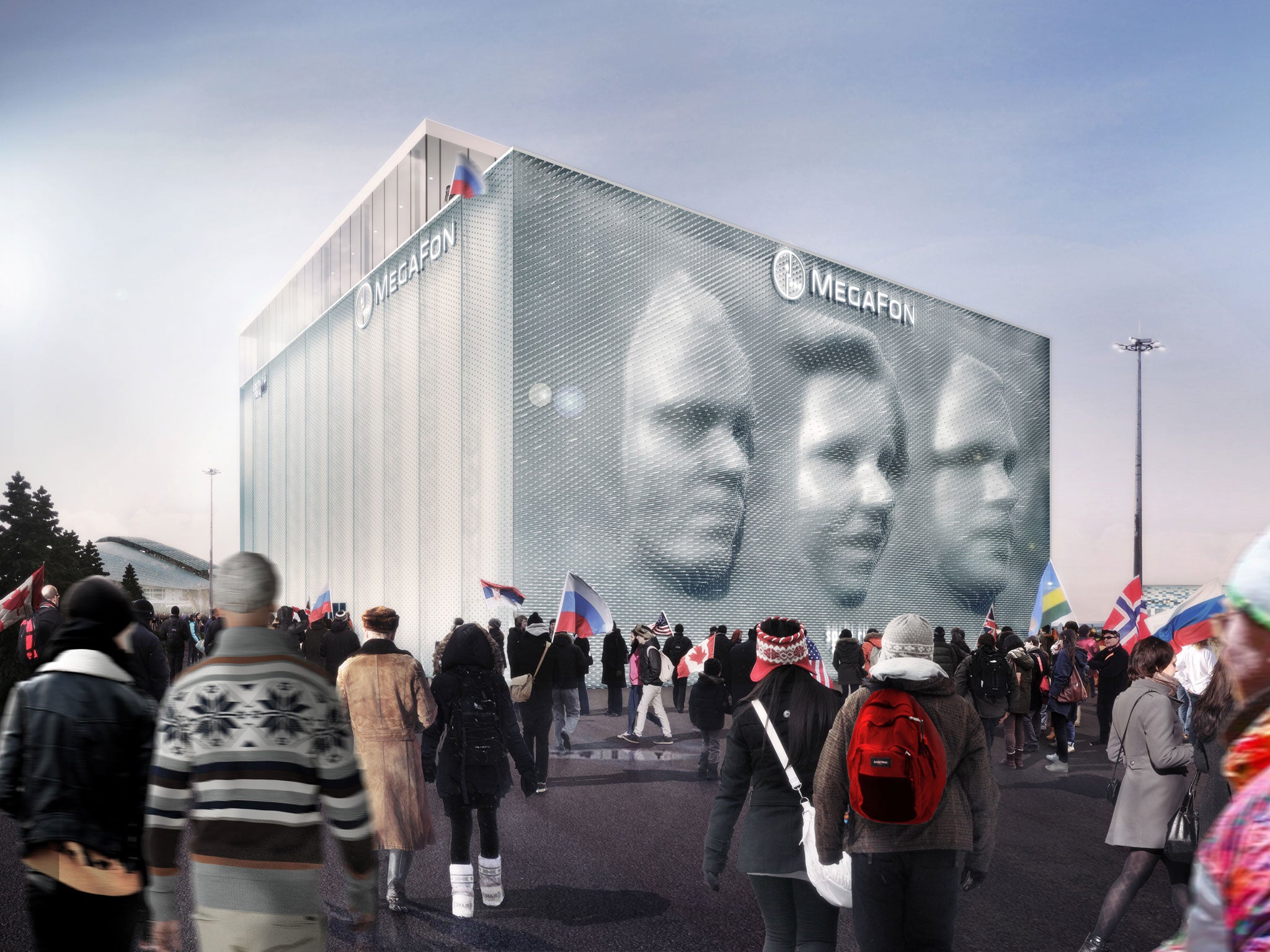Sochi 2014 spectators to become the face of the Games on 'Mount Rushmore of the digital age'
London designer Asif Khan's "MegaFaces" to play a prominent part in the Winter Olympics

Visitors to the Sochi Winter Olympics will have their faces immortalised on a “Mount Rushmore of the digital age” when a giant 3D piece of “inclusive architecture”, created by a London designer, is unveiled.
Created by Asif Khan, “MegaFaces”, a kinetic and interactive structure that displays the faces of participants as constantly changing three-dimensional portraits, will tower over the Olympic park.
A 3D photo booth captures five images of the visitor’s face simultaneously from different angles. They will then be displayed on the building’s skin for 20 seconds as an eight-metre image on the giant “pin screen”, which incorporates 10,000 telescopic cylinders.
Read more: Clare Balding and Charles Dance lead BBC's digitally-enabled Sochi 2014 Winter Olympics coverage
Participants are given a card telling then what time their gigantic reflection will hove into view. The faces will continually form, disappear and morph into a new image.
Organisers hope the “MegaFace” will allow 170,000 people to become the “face of the Olympics” when the Winter games open in Russia next month.
Khan, whose studio is in Bethnal Green, is known for his “magical realist” designs. His Beat Box Pavilion for Coca-Cola during the London Olympics incorporated 200 red and white interlocking plastic cushions and embedded sound technology that visitors could play like a musical instrument.
“MegaFaces” will stand in the Olympic pavilion of MegaFon, the Russian telecoms company and partner of the Winter games. “The concept is to make people the face of the Olympics,” said Khan, described by the New York Times as one of "Five Designers to Watch in 2011" and an architect who places “the future of human beings” at the centre of his work.
Khan said: “For thousands of years people have used portraiture to record their history on the landscape, on buildings and through public art. Even in the digital age we still use emoticons when texting to show how we feel. The concept for our digital Mount Rushmore is that the human face is still the strongest way of conveying emotion.” The concept also references the prominent use of faces in Soviet artistic propaganda.
The system will take approximately one minute to calculate a three-dimensional model from the five individual pictures taken in the photo booths.
Additional 3D photo booths sited at MegaFon retail stores around Russia will allow people who cannot enter the games to send an “avatar” to the Sochi structure. They can watch the results on a website and download a permanent video of their transformation.
After the games, “MegaFaces” is expected to travel to a prominent location in Moscow. Khan said that different versions may be produced for other international sporting and cultural gatherings, depending upon its reception.
Valentin Spiess, the CEO of Swiss engineering firm AG, who worked with Khan on the pavilion’s facade design, said: “The difficulty was the development of a system that would meet Asif’s requirements of the project in relation to speed, usability and image quality. The process will be as fast and simple as using a commercial photo booth.”
Khan’s previous installations include Cloud, a floating roof made from helium gas, water and soap and Parhelia, an indoor ice halo recreated in American East Coast became a highlight of Design Miami 2012.
Subscribe to Independent Premium to bookmark this article
Want to bookmark your favourite articles and stories to read or reference later? Start your Independent Premium subscription today.

Join our commenting forum
Join thought-provoking conversations, follow other Independent readers and see their replies